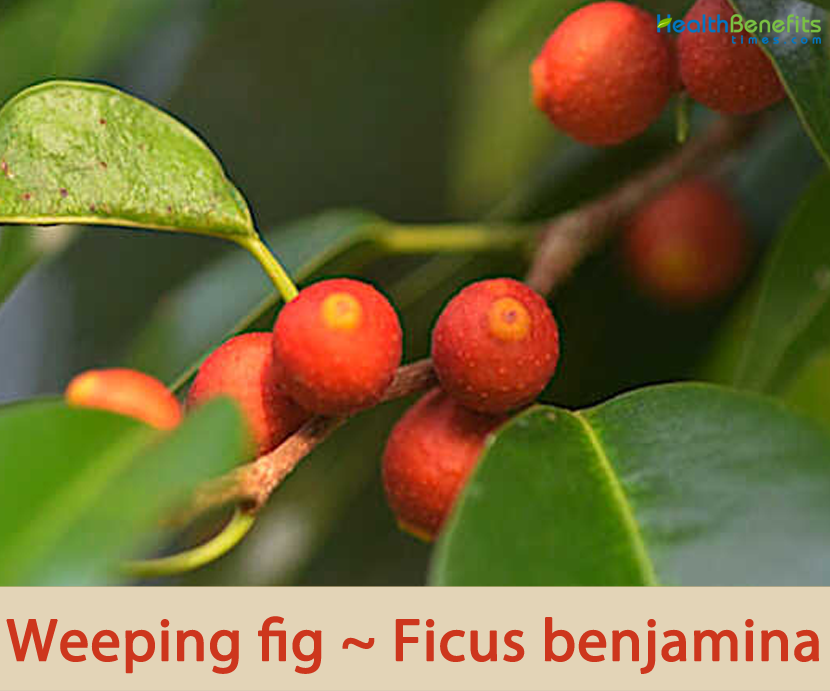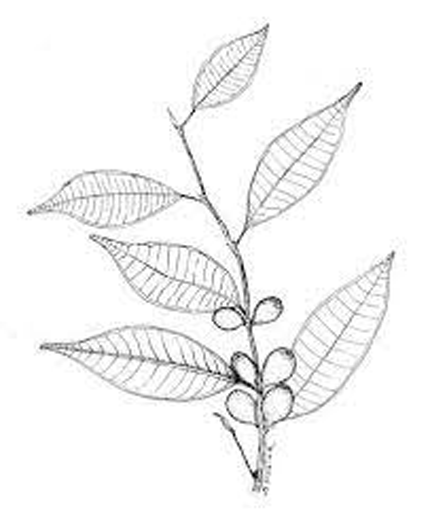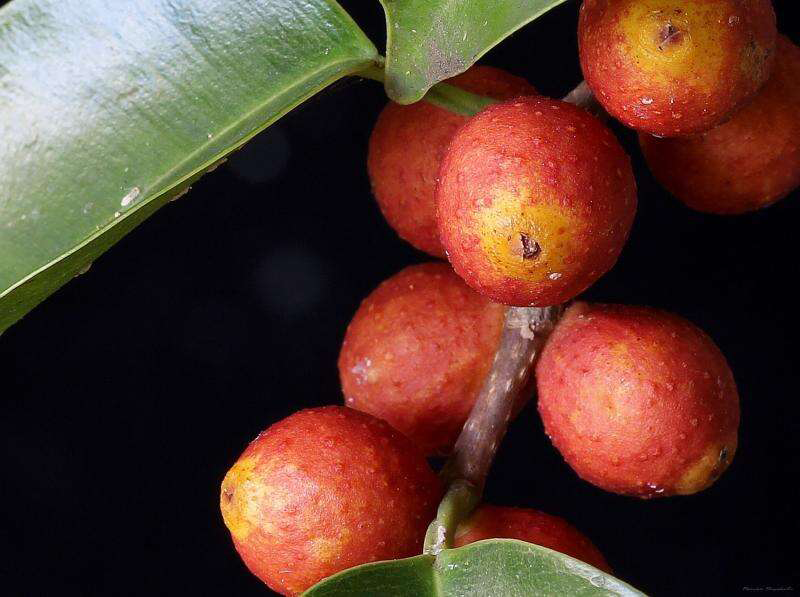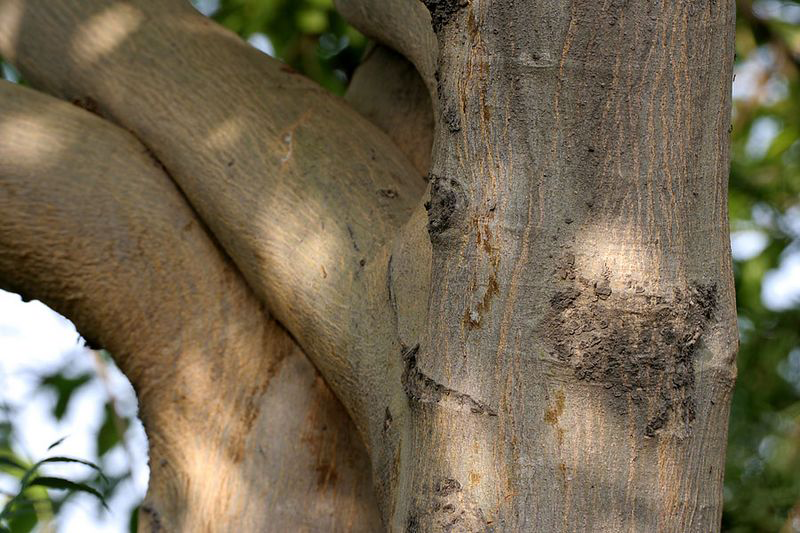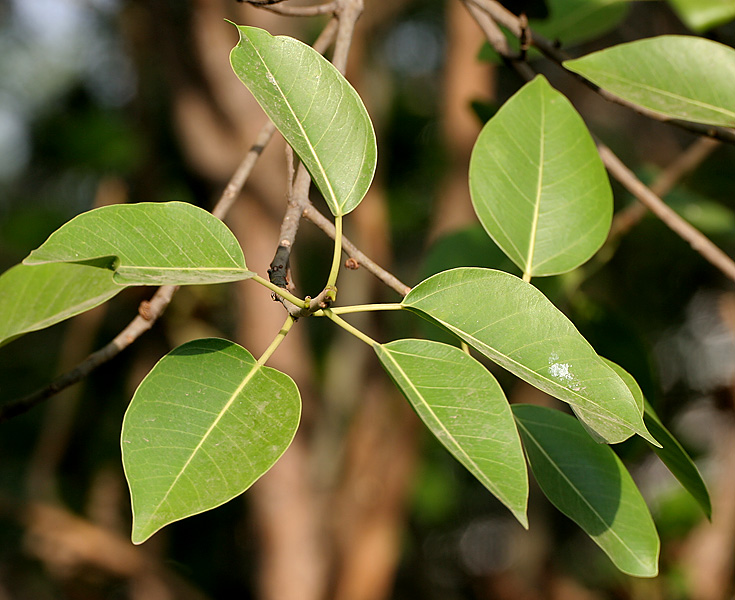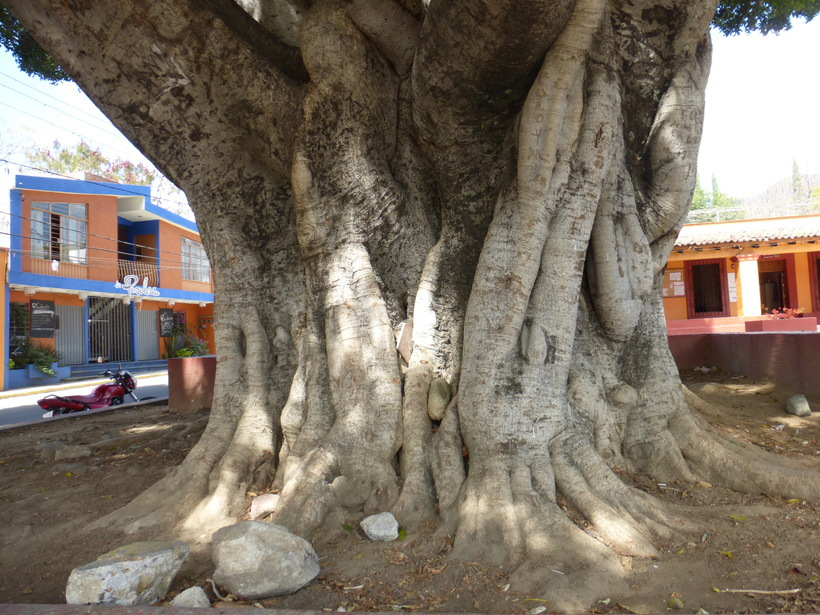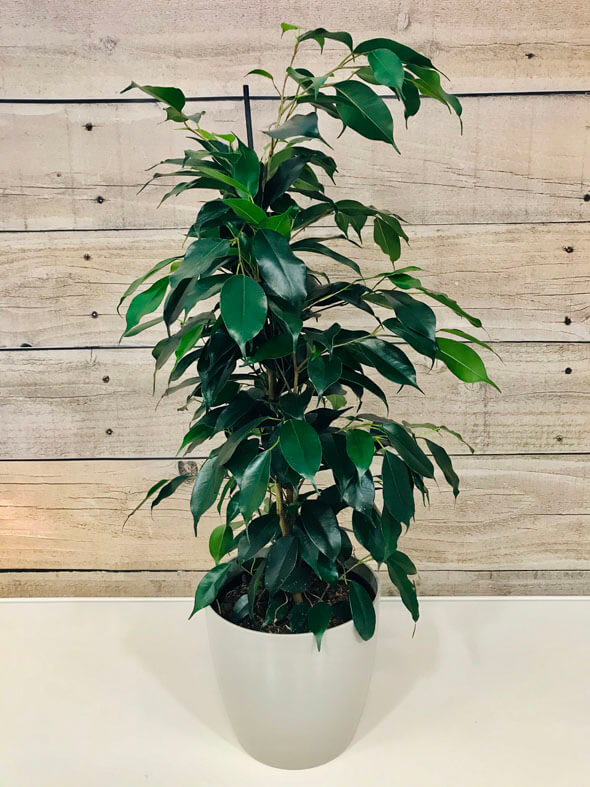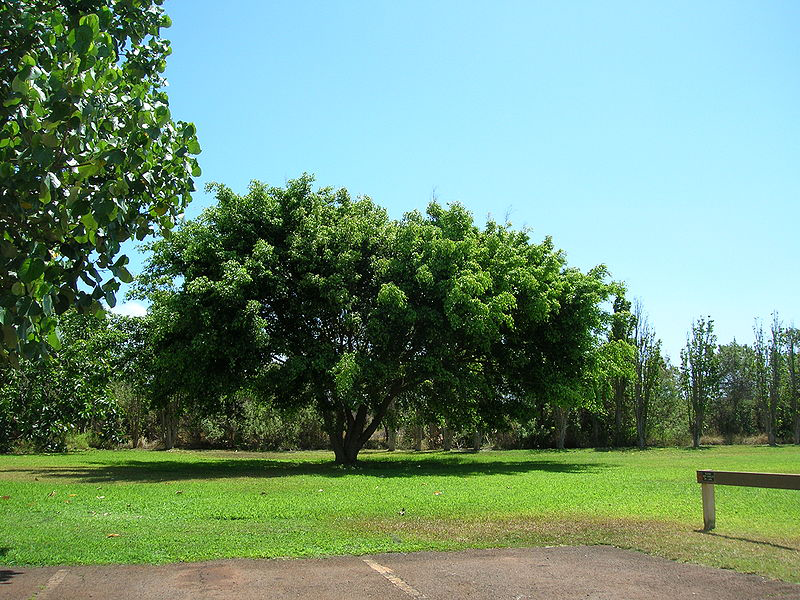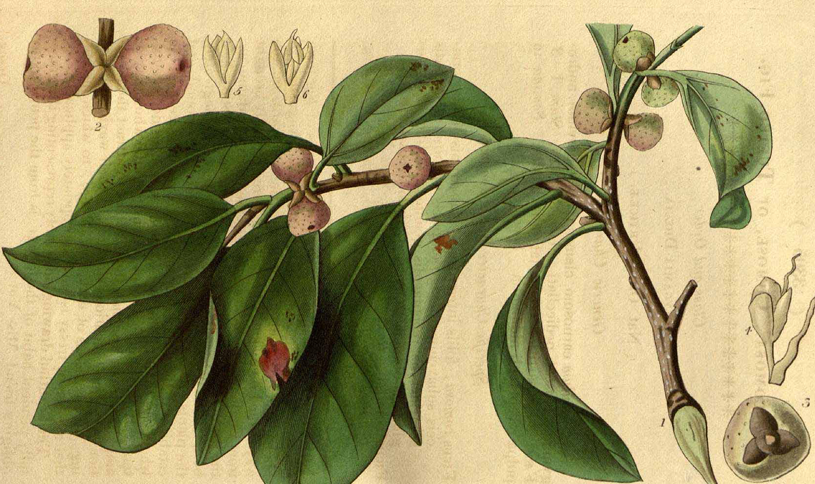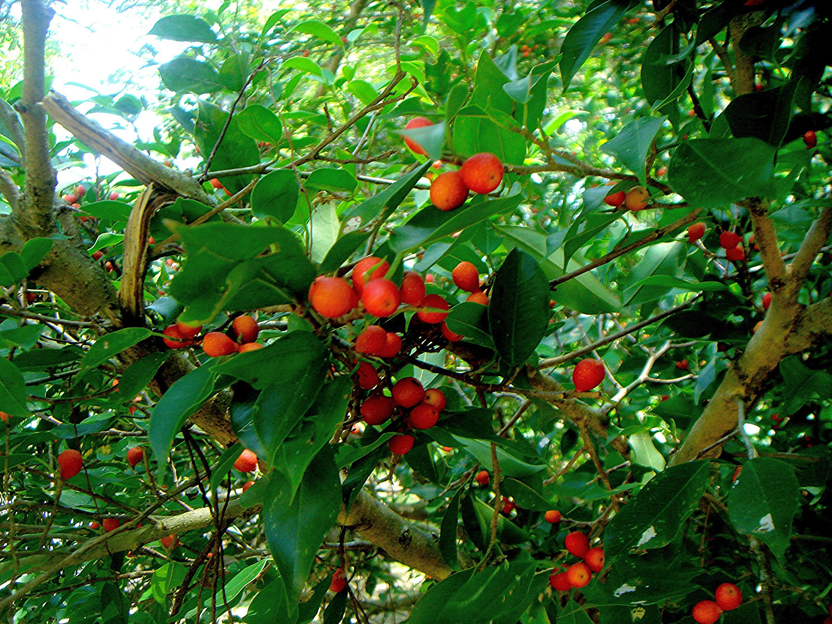| Weeping fig Quick Facts | |
|---|---|
| Name: | Weeping fig |
| Scientific Name: | Ficus benjamina |
| Origin | India, southern China, Southeast Asia, Malaysia, the Philippines, northern Australia, and the islands of the South Pacific |
| Colors | Initially green and then purple, yellow, red, or dark red when ripe |
| Shapes | Spherical-ovoid or elliptic shape, sometimes pear-shaped |
| Health benefits | Support for rheumatism, muscle pains or fatigue, ulcers, skin disorders, inflammation, piles, vomiting, leprosy, malaria, nose-diseases and cancer |
| Name | Weeping fig |
|---|---|
| Scientific Name | Ficus benjamina |
| Native | Large area including India, southern China, Southeast Asia, Malaysia, the Philippines, northern Australia, and the islands of the South Pacific |
| Common Names | Benjamin fig, Benjamin tree, Benjamin’s fig, Java fig, Malayan banyan, java tree, oval-leaf fig tree, tropic-laurel, weeping banyan, weeping fig, weeping laurel, Benjamin’s-tree, golden fig, small-leaf rubber-plant, weeping fig tree, small-leaved fig, ficus tree, Chinese banyan, Weeping Chinese Banyan, Java Laurel, Java Willow, small-leaved rubber plant, Waringin, Ara Waringin, Jejawi, fico-chorao |
| Name in Other Languages | Afrikaans: Treurvy Arabic: Tin binyamin (تين بنيامين ), fiks binjamina (فيكس بنجامينا) Assamese: Bor-naheri-bor Bengali: Lakṣa pākuṛa (লক্ষ পাকুড়) Brazil: Beringan, ficus-benjamina, figueira-benjamina Burmese: Kyet kadut, Nyaung lun, Nyaung thabye, nyaung laann (ညောင်လန်း) Caribbean: Figyé Central Khmer: Chreikroem (ជ្រៃក្រឹម) Chinese: Bai rong (白 榕), Chui ye rong (垂叶榕), cong mao chui ye rong, Xi ye rong, Bai rong, Xiao ye rong, Chui rong (垂榕), Báiròu róng (白肉榕) Cuba: Jaguey, laurel criollo Czech: Fíkus drobnolistý Danish: Birkefigen Dominican Republic: Arbol de Washington, filipo, filpo, higo cimarrón, laurel, laurel de la India Dutch: Wariengien, baniaanboom, treurvijg, waringin English: Benjamin tree, benjamin fig, Golden fig, Java fig, Java fig tree, Tropic-laurel, Weeping Chinese banyan, Weeping fig, java tree, Weeping-laurel, Malayan banyan, oval-leaf figtree , ficus tree, small leaved rubber plant Finnish: Limoviikuna French: Figuier benjamina, figuier pleureur German: Benjamin-Gummibaum, Birkenfeige, Benjamin-Feige, Benjamini Greek: Benzamíni (Μπενζαμίνη) Hebrew: Ficus ha’shderot, פיקוס השדרות , פיקוס השדרות Hindi: Waringin, Pukar (पुकर), Sami, Sarane, Swami Hungarian: Kislevelű fikusz Icelandic: Fíkjutré Benjamíns Indonesian: Beringin, wariengin, bergedat, caringing, rwaringin, sepreh, ajwundut, nanu merako Israel: Ficus ha’shderot Italian: Ficus beniamino Japanese: Shidare gajumaru (シダレガジュマル), Benjamin (ベンジャミン), benjamin-gomu-no-ki (ベンジャミンゴムノキ) Javanese: Waringin Kannada: Java atthi (ಜಾವಾಅತ್ತಿ), Jeevi (ಜೀವಿ) Korean: Benjamingomunamu (벤자민고무나무) Kwara‘ae: Fi‘i sirifena, sirifena Laos: Oox ng Lesser Antilles: Evergreen, laurel fig Malay: Beringin, Mendera, Waringin, Pokok Ara Beringin Malaysia/Peninsular Malaysia: Beringin, cheringin, waringin Malayalam: Putra Juvi, veḷḷāl (വെള്ളാൽ) Marathi: Nandaruk (नांदरूक) Micronesia, Federated states of: Baola, baulagaragara, kaimabu baulagarangara, dunar Mizo: Zamanhmawng Myanmar: Kyet-kadut, nyaung-lun, nyaung-thabye Nepali: Banij, Conkar, Samii (शमी), Sami, Svaamii, Swami Netherlands: Baniaanboom New Guinea: Book kebar, Ihien, tehd Nicaragua: Laurel de la India North Frisian: Birkenfiig Norwegian: Bjørkefiken Persian: فیکوس بنجامین Philippines: Balite, budbud, bugnai, salisi, salising-haoug, salsing-hubad Polish: Figowiec benjamina, fikus benjamina Portuguese: Beringan, ficus-benjamina, figueira-benjamina, fico-chorão Puerto Rico: Laurel benjamin Russian: Fikus Bendzhamina (Фикус Бенджамина) Sanskrit: Mandara, Banij Serbian: Fikus benjamina, Bendžamin, Fikus bendžamin (Фикус бенџамин) Slovak: Fikus malolistý Solomon Islands: Baula garanggara, haisi hena, sirifena Spanish: Árbol benjamín, Benjamina, Ficus benyamina, Matapalo, ficus, higuera llorona, jagüey, laurel de la India, Laurel Sudanese: Caringin Swedish: Benjaminfikus Tamil: Vellal (வெள்ளால்), Nintamaravakai (நீண்டமரவகை) Telugu: Konda Golugu, Konda Zuvvi, Putra Zuvvi, Pedda Zuvvi (పెద్దా ఉవ్వీ) Thai: Thịr ŷxy (ไทรย้อย ), Thịr ŷxy bı h̄ælm (ไทร ย้อยใบแหลม) Tongan: Ovava Fisi Ukrainian: Fikus Bendzhamina (Фікус Бенджаміна) Vietnamese: Cây sanh, Sanh |
| Plant Growth Habit | Large, slow-growing, spreading, strangling fig tree |
| Growing Climates | Moist mixed forests, near villages, towns, roadsides, disturbed thickets and hammocks |
| Soil | Thrive in fertile, moist soils in full sun (Whistler, 2000) but it can tolerate drought and a wide range of soil types including clay, loam, and sand, as well as well-drained, with pH levels ranging from acidic to alkaline |
| Plant Size | Up to 50 feet (15 m) outdoors and 3 to 6 feet tall when grown indoors. The bole can be 30 – 60cm in diameter |
| Root | Roots are adventitious, occasionally hanging |
| Crown | Symmetrical, spherical – hemispherical, which becomes wider with age, having a rather irregular outline, and dense foliage of fine texture |
| Bark | Light gray and smooth. The bark of young branches is brownish. |
| Branchlets | Brown, glabrous |
| Trunk | Trunk is somewhat pale and smooth and can grow to 3m in girth on mature, outdoor trees |
| Leaf | Leaves are leathery, oblong-ovate, 6 to 9 centimeters long, with prominent and rather slender point, rounded base, entire margins, smooth green and shining; the nerves slender and spreading, not prominent. Petioles are 5 to 10 millimeters long |
| Flowering season | August and September |
| Flower | Syconiums or figs (hypanthodia) are a special form of inflorescence and not the botanical fruit of the tree. Inside them are bearing the flowers (florets), which are of 3 types, including on the one hand the males and on the other the fertile females and the sterile females (or galls) |
| Fruit Shape & Size | Spherical-ovoid or elliptic shape, sometimes pear-shaped. They are 0.7 to 1 cm width, 0.8 to 1.5 cm length and have a diameter of 2.0 to 2.5 cm (3⁄4 to 1 inch) |
| Fruit Color | Initially green and then purple, yellow, red, or dark red when ripe |
| Plant Parts Used | Bark, root, leaves |
| Propagation | By aerial roots, semi-hardwood cuttings and by seeds |
| Lifespan | From 40 to 150 years |
Plant Description
Weeping fig is a large, slow-growing, spreading, strangling fig tree that normally grows up to 50 feet (15 m) outdoors and 3 to 6 feet tall when grown indoors. The bole can be 30 – 60 cm in diameter. Roots are adventitious, occasionally hanging. Crown is symmetrical, spherical hemispherical, which becomes wider with age, having a rather irregular outline, and dense foliage of fine texture. The trunk is somewhat pale and smooth and can grow to 3m in girth on mature, outdoor trees. Bark is light gray and smooth. The bark of young branches is brownish. The plant usually begins life as an epiphyte, growing in the branch of another tree; as it grows older it sends down aerial roots which, when they reach the ground quickly form roots and become much thicker and more vigorous. They supply nutrients to the fig, allowing it to grow faster than the host tree. The aerial roots gradually encircle the host tree, preventing its main trunk from expanding, whilst at the same time the foliage smothers the foliage of the host. Eventually the host dies, leaving the fig to carry on growing without competition.
The plant is found growing in moist mixed forests, near villages, towns, roadsides, disturbed thickets and hammocks. It thrive in fertile, moist soils in full sun but it can tolerate drought and a wide range of soil types including clay, loam, and sand, as well as well-drained, with pH levels ranging from acidic to alkaline. It is a very popular house plant, due to its elegant growth and tolerance of poor growing conditions. It does best under bright, sunny conditions but will also tolerate considerable shade. It requires a moderate amount of watering in summer, and only enough to keep it from drying out in the winter. It does not need to be misted. The plant is sensitive to cold and should be protected from strong drafts. When grown indoors, it can grow too large for its situation, and may need drastic pruning or replacing.
Leaves
Leaves are simple, leathery and intensely green, their shape is mainly ovate but often lanceolate or broad – elliptic, and their dimensions range between 3.6 to 12.5 cm in length, and 1.5 to 6 cm in width. They are arranged alternately on the shoots, with which they are connected by a petiole 5 to 30 mm long and 0.7 to 1.5 mm in diameter, which is adaxially sulcate and has a permanent skin. The base of the lamina is rounded to broad cuneate shaped and sometimes cordate, the margins are entire, while the apex is relatively short and acuminate. The cystoliths are visible on the adaxial surface of the blade as raised dots, and the waxy glands are either absent or present at the base of the mid vein, at the junction with petiole.
On either side of the mid vein are 8 to 10 almost regularly spaced secondary nerves, which are anastomosed near the margins, while the tertiary nerves are also visible. The stipules are 2, amplexicaul, caducous, membranous, and glabrous, lanceolate and 8 to 20 mm long. Leaves can be a shiny dark green or light green or creamy white and become darker green as the plant ages.
| Leaf arrangement | Alternate |
| Leaf type | Simple |
| Leaf margin | Undulate, entire |
| Leaf shape | Narrowly lanceolate to ovate |
| Leaf venation | Pinnate |
| Leaf type and persistence | Evergreen |
| Leaf blade length | 2 to 4 inches |
| Leaf color | Dark to medium green and shiny on top, paler green underneath |
| Fall color | No color change |
| Fall characteristic | Not showy |
Flower
The syconiums or figs (hypanthodia) are a special form of inflorescence and not the botanical fruit of the tree. Inside them are bearing the flowers (florets), which are of 3 types, including on the one hand the males and on the other the fertile females and the sterile females (or galls) – all hairless.
The male florets are few in number, are carried on a short peduncle, have a stamen on a relatively long filament, and are surrounded by a three-lobed or four-lobed calyx, with broadly ovate lobes. The female florets are sessile, they have a short and curved style (lateral) with an enlarged stigma, and they are surrounded by a three-lobed calyx, with shortly spatulate lobes.
The gall florets are numerous, sometimes they have a peduncle and sometimes they do not, they have a short and curved style (lateral), and they are surrounded by a three-lobed, four-lobed and / or five-lobed calyx, with narrowly spatulate lobes.
| Flower color | Unknown |
| Flower characteristics | Not showy; emerges in clusters within syconium produced by the tree |
Fruits
The syconia, which are joined directly to the hypanthium, grow in the axils of the leaves, singly or more usually in pairs. They have a spherical-ovoid or elliptic shape, sometimes they are pear-shaped, and their color is initially green and then purple, yellow, red, or dark red when ripe, with indistinguishable protruding rounded white spots on the surface.
Their size varies, having dimensions of 0.7 to 1 cm width, 0.8 to 1.5 cm length and have a diameter of 2.0 to 2.5 cm (3⁄4 to 1 inch). Also, the syconia enclose 2 to 3 unequal persistent bracts at the base, 0.5-1.5 mm wide which are crescentric and hairless, while the umbonate ostiole area is enclosed by another 3 minutes, flat and smooth imbricate bracts, 1.5 to 2 mm wide. Inside the figs are the real botanical fruits, the achene, which have an ovoid-reniform shape, while they are shorter than the persistent style.
| Fruit shape | Round |
| Fruit length | 1/3 to 1/2 inch |
| Fruit covering | Fleshy fig |
| Fruit color | Turns from green to yellow, orange, or dark red when ripe |
| Fruit characteristics | Does not attract wildlife; not showy; fruit/leaves a litter problem |
Varieties
Ficus come in a wide range of varieties: some larger, some smaller. Each variety can have entirely green foliage or a mix of colors such as yellow, green, and white. Varieties with bright leaves usually require more light, while entirely green plants can also grow in partial shade.
- Ficus benjamina ‘Natasja’: This ficus remains rather small, grows bushy and reaches a height of about 80cm. The leaves are a beautiful, vivid green.
- Ficus benjamina ‘Barok’: The leaves of this variety are rolled up, a bit like curly hair. This weeping fig tree grows compactly.
- Ficus benjamina ‘Golden King’: The foliage of this variety is golden yellow-green or creamy white variegated. It grows taller than 1m, although the growth can be limited by the size of the pot.
- Ficus benjamina ‘Twilight’: This variety has remarkable light green foliage with white edges. It can also grow larger and should be placed in a particularly bright place, so that the tree develops healthy bright patterned foliage.
Traditional uses and benefits of Weeping Fig
- The plant is also used as antimicrobial, antino-ciceptive, antipyretic, hypotensive and anti-dysentery remedy.
- In norther Surigao del Sur, preheated and pounded bark is applied directly to area of rheumatism.
- The Subanens in Zamboanga del Sur apply the poultice of bark on fractures.
- Latex is used to seal minor wounds.
- Juice of bark is used for liver diseases.
- Pounded leaves and bark applied as poultice for rheumatic headache.
- In Nepal, decoction of roots of Ficus benjamina is drank three times daily for relief of muscle pains or fatigue in women.
- It is also used as appetite stimulant.
- Latex is applied to boils.
- In Vietnam, latex applied to itches.
- In India the milky juice of the plant is used to treat whitening of the cornea of the eye.
- Decoction of the leaf, mixed with oil, is applied externally to ulcers.
- In Indo-China the latex is mixed with alcohol and prescribed for shock, and the pounded roots are applied to poison arrow wounds.
- Its latex and some fruit extracts are used by indigenous communities to treat skin disorders, inflammation, piles, vomiting, leprosy, malaria, nose-diseases and cancer besides the use as a general tonic.
- Leaves and twigs are used as insect repellant.
- Bark of the root, the root itself, and the leaves are boiled in oil and applied on wounds and bruises.
- The juice of the bark (latex) has a reputation in the Philippines for curing liver diseases.
- Pounded leaves and bark are applied as a poultice in the treatment of rheumatic headaches.
- In some parts of the world, its leaves and fruit extract are used by indigenous communities to treat skin and respiratory disorders.
Other Facts
- It is often planted in villages and cemeteries.
- Weeping fig is sometimes used for landscaping in urban areas and housing estates, and is planted along roadsides, although it can lift roads and pavements over time as its strong root system spreads.
- Bark was once used to make rope while the fruit are eaten by birds and small mammals.
- In Manila, it is planted as avenue and shade tree.
- Wood is low quality, but used for temporary construction, moldings, interior work, cladding, drawers, crates and boxes, etc.
- Twigs are used as insect repellent by keeping them under the beds.
- In Nepal, bark wrapped in grass with inflorescence of Musa paradisica and dry seed of Oryza sativa is fed to cattle to minimize risk of abortion.
- It is the official tree of Bangkok.
- The inner bark is a source of fiber.
- The wood is used for fuel.
- The largest plant is in India, with a crown width of 131 m and in excess of 1775 aerial roots.
- Sometimes, it is also used for the landscaping in housing estates and urban areas.
- Leaf juice can be used as bug and flea repellant.
Management Recommendations
Ficus benjamina is widely planted in dense concentrations on Maui in most urban areas and is presently not spreading in Hawai’i due to the fact that its pollinator wasp has not yet been introduced. Should the wasp arrive and successfully establish on Maui, the small size of fruit, large population size, and epiphytic nature may lead to an aggressive invasive nature similar to that of the pest, Ficus microcarpa, though this is not certain. For now, F. benjamina is a widely planted tree that is not spreading and the best way to keep it that way is to prevent the arrival of its associated pollinator wasp.
Different Control Methods
Physical control
Control of Ficus species seems daunting and is just beginning to be explored in Hawai’i. It is uncertain if small seedlings on the ground or as epiphytes can be pulled. Often, trees will germinate on and grow as epiphytes on other desirable trees, concrete structures, and fence posts. These are occasionally out of reach or on steep dangerous terrain. Care will need to be taken in order to successfully kill the unwanted Ficus while preserving the host. Without control, the host tree or structure is in danger of destruction through strangulation.
Chemical control
Hammer reports the following. “Fig trees are particularly sensitive to triclopyr herbicides as a basal or cut-stump treatment. Trees found growing on concrete or rock structures should be treated with herbicide while young to avoid costly structural damage. Use extreme caution when applying herbicide to figs growing as epiphytes to ensure that the poison does not contact the host tree. When exotic figs germinate high in the branches of large trees in natural forest communities, it may be extraordinarily difficult to get close enough to the fig to treat it.”
Biological control
Nadel et al. report several pests that could be looked at for biological control potential including various ants which were seen carrying off pollinator wasps from Ficus fruits, Hymenoptera and mites that may be parasites of the pollinator wasps, and staphylinids which were seen entering Ficus fruits and eating the pollinator wasps.
Cultural control
The pollinator wasps should be prevented from entering Hawai’i in order to prevent spread of F. benjamina.
Precautions
- The plant is a major source of indoor allergens, ranking as the third-most common cause of indoor allergies after dust and pets.
- In extreme cases, Ficus sap exposure can cause anaphylactic shock in latex allergy sufferers.
- The consumption of parts of plants leads to nausea, vomiting, and diarrhea. Exceptions are the edible fruits.
- The sap from the plant contains furocoumarins, psoralens and ficin.
- Frequent contact can cause itching of the eyes, cough, and wheezing; contact and exposure to sunlight can cause skin irritation with itching, redness and stinging.
- Effects are usually minor or only lasting for a few minutes
- If a person who is allergic to latex should avoid getting the latex liquid on their skin (6). Because it may cause anaphylactic shock (severe allergic reaction) in extreme conditions.
- It also causes some common allergy symptoms like rhino conjunctivitis and allergic asthma to humans.
- In some occupations such as gardeners, it can induce contact urticaria (swelling and redness). Angio-edema (swelling) and pruritus (irritation sensation).
References:
https://www.itis.gov/servlet/SingleRpt/SingleRpt?search_topic=TSN&search_value=19083#null
http://www.hear.org/pier/species/ficus_benjamina.htm
https://npgsweb.ars-grin.gov/gringlobal/taxon/taxonomydetail?id=16785
https://www.cabi.org/isc/datasheet/24065
https://www.missouribotanicalgarden.org/PlantFinder/PlantFinderDetails.aspx?taxonid=282745
http://www.stuartxchange.com/Balete.html
https://indiabiodiversity.org/species/show/266605
http://www.theplantlist.org/tpl1.1/record/kew-2809661
https://en.wikipedia.org/wiki/Ficus_benjamina
http://www.flowersofindia.net/catalog/slides/Weeping%20Fig.html
http://www.hear.org/starr/hiplants/reports/pdf/ficus_benjamina.pdf
https://www.nparks.gov.sg/florafaunaweb/flora/2/9/2902
https://gd.eppo.int/taxon/FIUBE
https://edis.ifas.ufl.edu/publication/ST251
https://tropical.theferns.info/viewtropical.php?id=Ficus+benjamina
https://plants.usda.gov/home/plantProfile?symbol=FIBE


